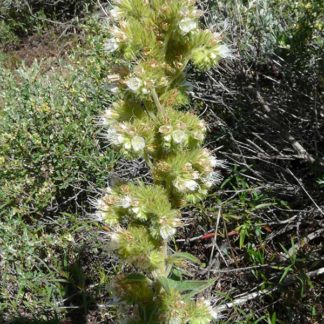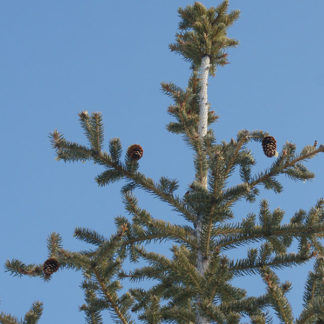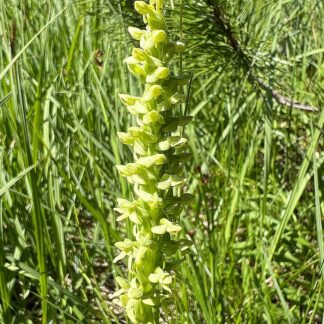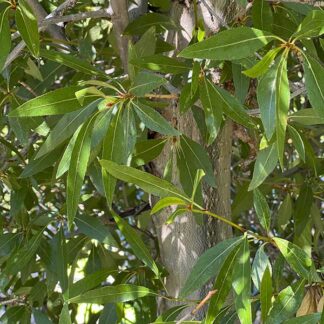spring
Showing 97–108 of 148 results
-

Penstemon procerus / littleflower penstemon
- low growing in exposed, undisturbed habitats
- tight cluster/whorls of small purple/blue/pink flowers
- tubular flowers, with lips around opening
-

Penstemon rydbergii / Rydberg’s penstemon
- small, blue/purple tubular flowers in leafy whorls
- flowers lack glands or hairs
- basal rosette of bright green, spoon-shaped leaves without glands or hairs
- stem leaves are lanceolate, around flower clusters
- wetter areas, but also along Victor/Driggs bike path
-

Phacelia heterophylla / varied leaf scorpionweed
- spirally arranged, teeny white flowers with very long stamens
- flowers turn brown soon after opening
- all parts of the plant are hairy
- not all that common, but widespread
-

Phacelia sericea / silky phacelia
- deep purple flowers with really long stamens and orange anthers
- many flowers arranged in a tight coil up to 2 feet long
- silky, divided (fern-like) leaves
- exposed, higher altitude, rocky places; often with sagebrush
-

Phalaris arundinacea / reed canarygrass
- large, coarse, erect grass
- long, flat blades with pointy tips... from base
- distinct ligule—membranous and long
- large but compact inflorescences (panicles)
- often in dense monocultures, e.g. on river banks
-

Phlox diffusa / spreading phlox
- low, spreading, moss-like (before blooming)
- flowers 5-petaled, a variety of colors, and with a tube below the petals
- many habitat types incl. mountain slopes, rocky terrain, dry forests or with sagebrush
- blooms in early spring to early summer
- confusable with P. hoodii
-

Phlox longifolia / longleaf phlox
- white or pink to almost rose flowers
- blooms in spring, sometimes through to August
- common on disturbed and undisturbed sites
-

Picea pungens / Colorado blue spruce
- conical, layered crown; whorled branches
- frequent epicormic branches; "woolly" look
- stout, yellow-brown twigs with sterigmata (woody pegs)
- cones greater than 2.5" long
- cone scales stiff at base, diamond shaped, not wavy at tips
- in mixed conifer forests
-

Pinus contorta / lodgepole pine
- evergreen conifer
- needles in groups (fascicles) of 2
- lopsided cones, (mostly) remain on tree when mature
- rounded crown; orangey-brown scaly bark
-

Platanthera huronensis / green bog orchid
- usually in bogs, fens, wetlands
- up to two feet tall, but often shorter
- thick, nearly vertical leaves with parallel veins (i.e. grass-like)
- up to 75 very small flowers per stem (raceme)
- flowers -light green to greenish-white; two petals, three sepals, a lip and club-like spur
- lip is not pouch-like
-

Poa bulbosa / bulbous meadow-grass
- short, tuft-forming grass
- funny-looking flower stalks... having bulblets instead of florets
- doesn't produce pollen or seeds
-

Populus angustifolia / narrow-leaf poplar
- a riparian tree also planted for landscaping
- long, narrow leaves with serrated edges
- furrowed, grey bark on mature trees; smooth and yellow-ish on young trees
- flowers are small, grey catkins in very early spring
- fruits are fluffy white cotton in early-mid summer
Showing 97–108 of 148 results